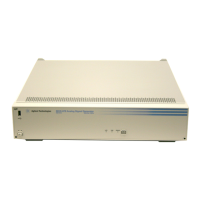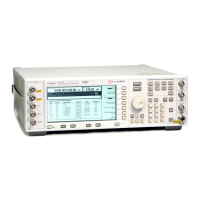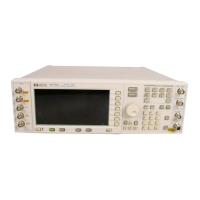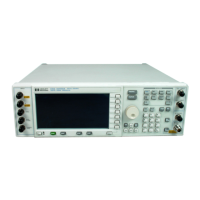148 Agilent N5181A/82A MXG Signal Generators SCPI Command Reference
Component Test Digital Commands
Dual ARB Subsystem–Option 651/652/654 ([:SOURce]:RADio[1]:ARB)
marker points placed at defined sample points in a waveform segment. This means that a marker
point cannot be less than one or greater than the last sample point in the waveform. Marker points
are cumulative, so multiple command executions with different range values, without first clearing
the existing points, places additional marker points on the waveform. Because of this cumulative
behavior, it is a good practice to clear existing marker points prior to setting new points. This will
eliminate unexpected marker pulses. Refer to “:MARKer:CLEar” on page 146 and
“:MARKer:CLEar:ALL” on page 146 for information on clearing marker points.
For waveforms generated on the signal generator (baseband generator), the Agilent MXG
automatically places a marker point at the first waveform sample for markers one and two.
NOTE You can set markers for either positive or negative polarity. The following discussions for this
command assume positive marker polarity. When using negative marker polarity, the marker
pulses occur during the periods of no marker points.
There are three ways to place marker points using this command:
• consecutive marker points over a range that collectively create a single marker pulse that spans
the range
• equally spaced marker points over a range, so that a marker pulse occurs at each sample point
that coincides with a marker point (Using this method, you can configure a clock signal by setting
the <skip_count> variable to one.)
• a single marker point placed at a specific sample point in the waveform, which outputs a single
pulse relative to the marker point location (To configure a single marker point, set the first and
last points to the same number.)
For more information on markers, refer to the User’s Guide.
The following list describes the command variables:
"<file_name>" This variable specifies the name of the waveform file in volatile waveform memory
(WFM1). For information on the file name syntax, see “File Name Variables” on
page 12.
<marker> This variable selects the marker number; an integer value from one to four.
<first_point> This variable defines the first point in the range over which the marker is placed.
This number must be greater than or equal to one, and less than or equal to the
total number of waveform points.
If you enter a value for either the first marker point or the last marker point that
would make the first marker point occur after the last, the last marker point is
automatically adjusted to match the first marker point.
<last_point> This variable defines the last point in the range over which the marker will be
placed. This value must be greater than or equal to the first point, and less than
or equal to the total number of waveform points.
<skip_count> This variable defines the marker point pattern across the range. A zero value
means the marker points occur consecutively across the range. A value greater
than zero creates a repeating marker point pattern across the range, where the
gap between the marker points is equal to the <skip_count> value. The gaps begin
after the first marker point. Each marker point in the pattern, which is only one
point wide, produces a marker pulse.
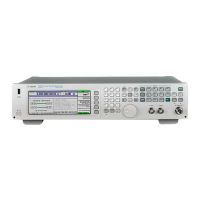
